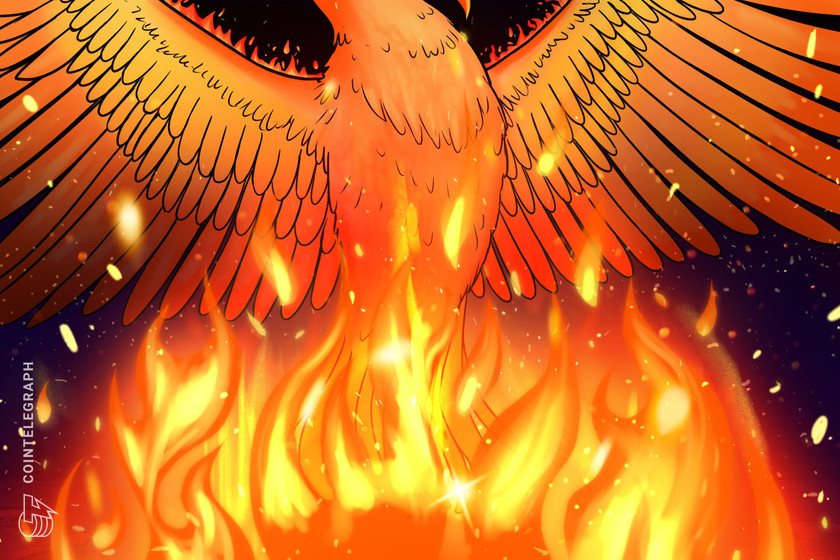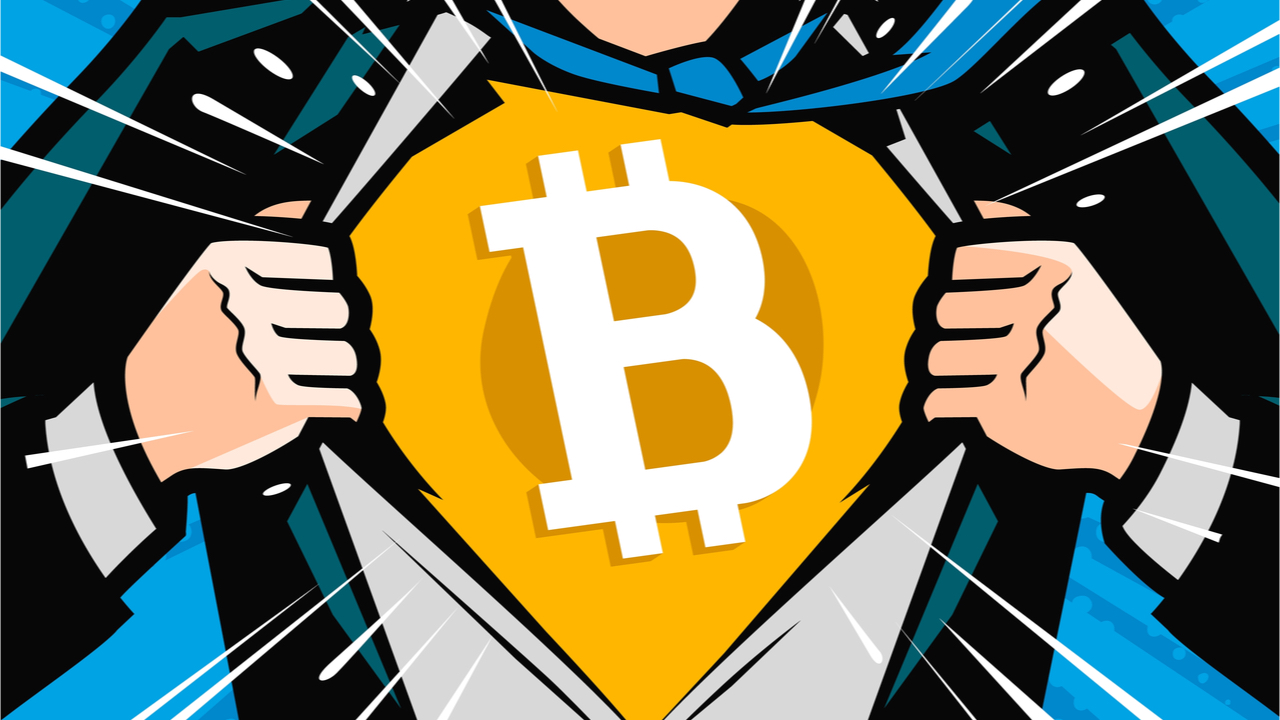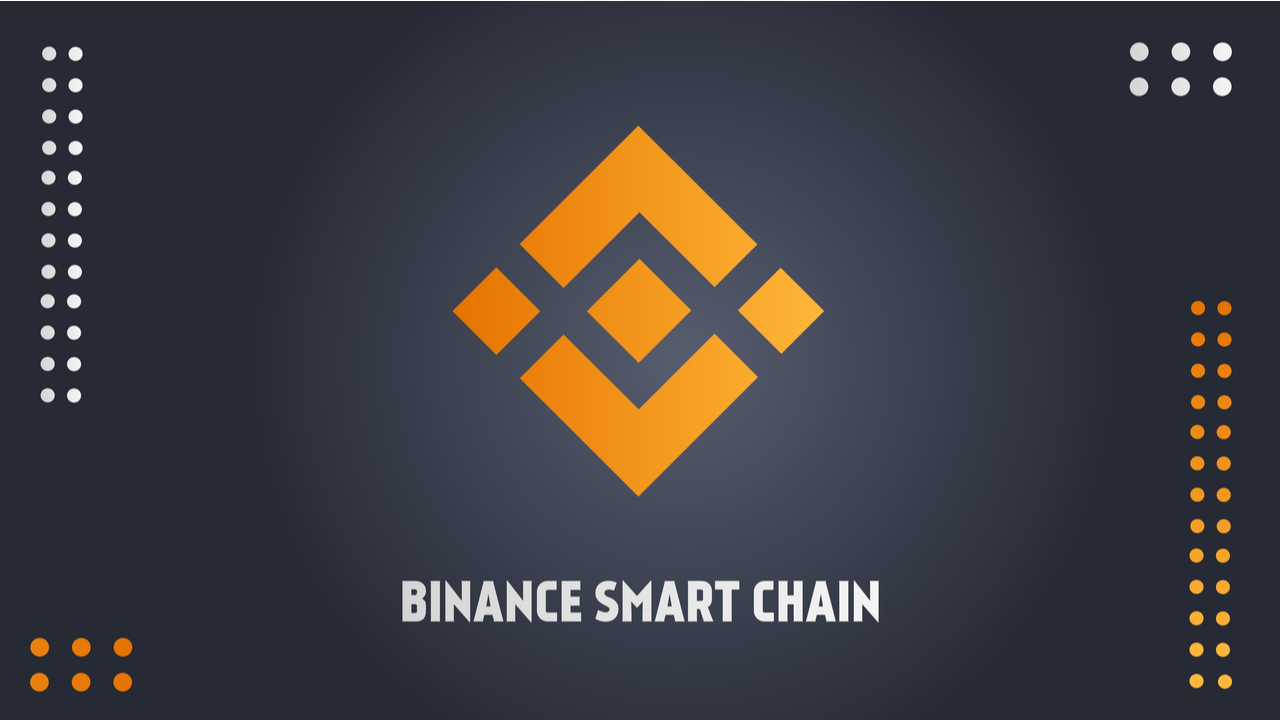 Following the aftermath of Terra’s UST implosion, the blockchain project’s founder Do Kwon has been actively discussing the Terra ecosystem revival plans and one specific proposal will be voted on May 18. The plan is to fork the blockchain into a new chain that does not include an algorithmic stablecoin, and the newly minted tokens […]
Following the aftermath of Terra’s UST implosion, the blockchain project’s founder Do Kwon has been actively discussing the Terra ecosystem revival plans and one specific proposal will be voted on May 18. The plan is to fork the blockchain into a new chain that does not include an algorithmic stablecoin, and the newly minted tokens […]
The Terra Money Twitter account shared the finer points on Do Kwon's initial rescue plan: expanding the base pool, burning UST and staking LUNA.
The Terra rescue story continues to unravel. In a tweet thread, the Terra Money Twitter account went into greater detail regarding the CEO of Terraform Labs, Do Kwon's rescue plan for UST.
The thread sheds light on Proposal 1164, Do Kwon’s initial strategy for Terra from May 11. The proposal would better balance the algorithmic stablecoin UST by expanding the base pool for the currency. The proposal has received 220,000 votes, at over 50%.
The tweet thread also explains that there is a “supply overhang” of UST which explains LUNA’s “dilution” (or price depreciation). As a result, now they must burn more UST:
“The primary obstacle is expelling the bad debt from UST circulation at a clip fast enough for the system to restore the health of on-chain spreads.”
Consequently, there are three emergency measures to be implemented, one of which focuses on burning more UST:
3/ TFL is also initiating three more emergency actions:
— Terra (UST) Powered by LUNA (@terra_money) May 12, 2022
1. Proposal to burn the remaining UST in the community pool.
2. TFL will burn the remaining 371 million UST cross-chain on Ethereum.
3. TFL just staked 240 million $LUNA to defend from network governance attacks.
The so-called Agora Proposal vote is imminent, shared by user “The Intern” on the Terra Research forum. In total, the burn should take the total amount of UST burned to 1.4 billion UST, or “11% of the outstanding UST liabilities,” the site details.
In summary, the team hopes that expanding the base pool for the coin and burning more should save UST.
Point three, concerning the staking of 240 million LUNA, will reportedly strengthen the network governance of the TERRA ecosystem.
However, for some observers, staking 240 million LUNA, (roughly equivalent to $200 million dollars) is not enough to save the project:
Regarding 3, the way things are going you would need to stake a lot more than 240 million $LUNA to ensure the safety of the network. $LUNA crashing in price and having the peg not restored is also a problem, the longer it takes the more $LUNA gets minted.
— Meto (,️) (@hodlmastermeto) May 12, 2022
Other commentators have suggested that Proposal 1164 will actually accelerate the ongoing “death spiral” of LUNA and UST.
Related: Bitcoin falls below $27K to December 2020 lows as Tether stablecoin peg slips under 99 cents
Cointelegraph previously reported that the crypto community was quick to call out Do Kwon’s algorithmic stablecoin. Plus, out-of-the-ordinary theories have also been shared regarding a planned “attack” on the ecosystem orchestrated by competing players.

Excessive Terra supply coupled with UST supply contraction coincides with LUNA's price decline.
Terra (LUNA) has plunged significantly after witnessing a FUD attack on its native stablecoin TerraUSD (UST).
The LUNA/USD pair dropped 20% between May 7 and May 8, hitting $61, its worst level in three months, after a whale mass-dumped $285 million worth of UST. As a result of this selloff, UST briefly lost its U.S. dollar peg, falling to as low as $0.98.

LUNA serves as a collateral asset to maintain UST's dollar peg, according to Terra's elastic monetary policy. Therefore, when the value of UST is above $1, the Terra protocol incentivizes users to burn LUNA and mint UST. Conversely, when UST's price drops below $1, the protocol rewards users for burning UST and minting LUNA.
Therefore, during UST supply reduction, LUNA's valuation should decrease. Similarly, when UST's supply expands, LUNA's valuation increases, notes Will Comyns, a researcher at Messari.
The chart below shows an ongoing downtrend in the daily UST supply, coinciding with a relative increase in daily LUNA supply. On May 8, UST's market underwent contraction for the first time in two months, dropping by 28.1 million below zero. Simultaneously, LUNA's supply expanded by over 436.75 million above zero.

The excessive daily supply against what appears to be a lowering or stable market demand may have pushed LUNA's price lower.
Terra's ongoing price decline prompted LUNA to retest a support confluence consisting of its 50-day exponential moving average (50-day EMA; the red wave) near $56 and a multi-month upward sloping trendline.
Interestingly, the ascending trendline constitutes a rising wedge pattern in conjugation with another upward trending line above. Rising wedges are bearish reversal setups, so their occurrence on Terra's weekly chart suggests more downside is probable.

As a rule of technical analysis, a rising wedge breakdown pushes the price lower by as much as the maximum distance between the structure's upper and lower trendline.
Related: Luna Foundation Guard acquires additional 37,863 BTC as part of reserve strategy
Thus, if LUNA breaks below its wedge from its current support confluence, accompanied by an increase in volumes, its price would risk falling to around $22.50, down over 60% from today's price.
Conversely, a rebound from the support confluence would have LUNA positioned for a run-up toward the wedge's upper trendline — above $130, a new record high.
The views and opinions expressed here are solely those of the author and do not necessarily reflect the views of Cointelegraph.com. Every investment and trading move involves risk, you should conduct your own research when making a decision.

Memecoin Shiba Inu can officially be used to purchase land in the SHIB Metaverse using the native SHIB token, as the development team continues to provide utility for holders.
Holders of the popular memecoin Shiba Inu (SHIB), will now be able to use the cryptocurrency to purchase land in the Shiba metaverse.
On Wednesday, the Shiba Inu team took to Twitter to reveal that the SHIB token could now be used to mint parcels of land in the recently unveiled virtual reality project “SHIB: The Metaverse.”
New minting option has been released on https://t.co/f2oLn05qWk!
— SHIB: The Metaverse (@ShibTheMV) May 4, 2022
Mint lands with $SHIB!
Minting with $SHIB Details:
0.2 ETH equivalents in $SHIB
0.3 ETH equivalents in $SHIB
0.5 ETH equivalents in $SHIB
1 ETH equivalents in $SHIB#ShibTheMetaverse #ShibMV pic.twitter.com/mOrpwDSkDK
There are 100,595 different pieces of land on offer in the SHIB: The Metaverse. Initially it was only possible to purchase land using ETH. Now, SHIB’s integration into the metaverse project makes it possible to not only purchase land, but grants users added customisation options for their virtual land as well.
Landowners in the SHIB: The Metaverse will be able to generate passive income, gather in-game resources, and generate rewards, although these are yet to be revealed.
Land plots in the SHIB metaverse are set to be released in phases. The introductory stage saw 36,431 plots become unlocked on April 13 with the land being divided into four categories: Silver Fur, Gold Tail, Platinum Paw and Diamond Teeth, priced between 0.2 ETH to 1 ETH.
Despite the popular narrative that paints SHIB out to be a simple memecoin, solely driven by hype and Elon Musk tweets, the SHIB ecosystem has grown to support include NFTs and the Defi-platform ShibaSwap.
The SHIB ecosystem is additionally comprised of subsidiary tokens, including LEASH and BONE, which developers say will play more of a significant role as the metaverse project is developed. At present, holders that lock their LEASH are given priority access to land bids, while BONE is a governance token that allows holders to vote on decisions concerning the development of the metaverse.
According to a recent Medium post from the Unification Foundation, SHIB: The Metaverse will be developed in Shibarium, a forthcoming Layer-2 scaling solution for SHIB. A public test for Shibarium is set to go live over the next few months with a public beta to follow soon afterwards.
At the time of writing, SHIB has experienced a brief recovery gaining roughly 6% in the last 12 hours. Overall, price action concerning the token remains sluggish, with SHIB currently down 12.3% over the past two weeks. The token is now trading at $0.0000218, down over 74% from its all-time high on October 28 last year.
On April 23rd, developers launched SHIB burning portal, ShibBurn, which has seen more than 22.5 billion SHIB tokens (approx. $500,000) removed from circulation. Since SHIB’s inception approximately 410.32 trillion SHIB — 41% of the total supply — have now been burned.
 Another spicy week of crypto news heads into the weekend, with Mexico’s third-richest billionaire advising “save your skin” from hyperinflation by buying bitcoin, Shark Tank star Kevin O’Leary predicting that bitcoin mining will “save the world,” Bitcoin.com News noting eerie similarities between the current great monetary shift and the creation of the U.S. Federal Reserve, […]
Another spicy week of crypto news heads into the weekend, with Mexico’s third-richest billionaire advising “save your skin” from hyperinflation by buying bitcoin, Shark Tank star Kevin O’Leary predicting that bitcoin mining will “save the world,” Bitcoin.com News noting eerie similarities between the current great monetary shift and the creation of the U.S. Federal Reserve, […]
BNB tokens will now be burned automatically based on a formula that includes blocks generated and BNB’s price.
Binance officially announced the implementation of a new Binance Coin (BNB) Auto-Burn protocol to replace its current quarterly burn mechanism.
In response to the requests of the BNB community, Binance changed its quarterly burning protocol for BNB tokens. According to Binance, this will provide more “transparency and predictability” to its community. With this, BNB will be burned automatically based on a formula consisting of on-chain data of total blocks generated and the average price of BNB.
At the moment, there are two burning mechanisms for BNB. One is the real-time burning of a percentage of gas fees on the Binance Smart Chain. The second is the quarterly burn based on Binance’s Accelerated Burn Program, which the BNB Auto-Burn mechanism would replace.
Since the launch of BNB, Binance has committed to burning 100 million BNB, which is half of the original total supply. When the total circulating supply of BNB goes below 100 million, the Auto-Burn will be discontinued.
In the last quarterly burn, the company took 1,335,888 BNB, approximately $639,462,868 at the time, out of circulation. Earlier this year, the team destroyed $400 million worth of BNB tokens in the 16th quarterly burn event.
At the time of writing, BNB is trading down less than 10% on the month at $528. It’s down 23.65% from its all-time high of $690.93 back on May 10, 2021, but is still up by 1,295% since the start of 2021.
Related: Binance VC arm leads $60M round in cross-chain protocol Multichain
Meanwhile, Binance became one of the first to join the crypto hub established by the United Arab Emirates government in Dubai. The news came a day after the Dubai government announced the launch of its crypto hub.

$1.25 billion in ETH options expire on Nov. 26 and bulls are better positioned above $4,200.
Ether (ETH) investors have no reason to complain after the 344% gains accumulated in 2021 until Nov. 24. Still, analysts fear that the $4,000 resistance test on Nov. 19 is forming a descending channel that aims at $3,600 by mid-December, an 18% correction from the current $4,400 price.
Despite outperforming Bitcoin (BTC) by 16% in the past month alone and the ETH/BTC pair climbing to 10-week highs, Ether seems to be struggling with its own success.

Users continue to complain about Ethereum gas fees, averaging over $45 over the past three weeks. However problematic that can be, it leaves no doubt that the largest decentralized finance (DeFi) and nonfungible tokens (NFT) markets continue to thrive on Ethereum.
Tried to buy something for $5 using eth.
— Chris Bakke (@ChrisJBakke) November 17, 2021
The gas fees are $480.45.
How certain are we that an Airbnb product manager isn’t the creator of Ethereum? pic.twitter.com/G35F0o6keO
Increasing regulatory uncertainties in the United States remain a decisive limiting factor for Ether's rally. On Nov. 24, the Securities and Exchange Commission, or SEC, clarified that the crypto panel in the public meeting scheduled for Dec. 2 would focus on the regulatory framework.
Not even the one million ETH burned since the implementation of EIP-1559 in August was enough to keep Ether's price at all-time highs. As the network emits about 5.4 million ETH per year, Ether remains an inflationary asset. Still, Ether's price increased by 16% vs. Bitcoin since Oct. 25, partially reflecting that impact.
Despite the 10% correction to $4,400 since the $4,850 all-time high on Nov. 10, the Ether call (buy) options vastly dominate Friday's expiry.

The green area representing the $820 million call (buy) options is the lion's share of Nov. 26 expiry. Compared to the $440 million puts (sell) instruments, there's an 87% difference.
Nevertheless, the 1.87 call-to-put ratio should not be taken literally, as the recent ETH drop will likely wipe out 77% of the bullish bets. For instance, if Ether's price remains below $4,400 at 8:00 am UTC on Nov. 26, only $165 million worth of those call (buy) options will be available at the expiry.
In other words, what good is holding the right to buy Ether at $4,400 or $4,600 if it's trading below that price?
Below are the three most likely scenarios based on the current price action. The number of option contracts available on Nov. 26 for bulls (call) and bear (put) instruments vary depending on the expiry ETH price. The imbalance favoring each side constitutes the theoretical profit:
This crude estimate considers call options being used in bullish bets and put options exclusively in neutral-to-bearish trades. Still, this oversimplification disregards more complex investment strategies.
For example, a trader could have sold a put option, effectively gaining a positive exposure to Ether above a specific price. But unfortunately, there's no easy way to estimate this effect.
Bears need a 7.5% move from $4,400 down to sub-$4,100 to balance the scales and avoid a $130 million loss. On the other hand, bulls need a 2.3% price increase to $4,500 to boost their profits by $85 million.
Traders must consider that the amount of effort a seller needs to pressure the price is immense and usually ineffective during bullish markets. Currently, options market incentives are balanced, favoring the $4,200 to $4,500 price range, entitling bulls to a $130 million profit on Friday, Nov. 26.
The views and opinions expressed here are solely those of the author and do not necessarily reflect the views of Cointelegraph. Every investment and trading move involves risk. You should conduct your own research when making a decision.

On a net basis, however, the supply of Ether is still inflating at about 1.2% per year.
In a Twitter post published Wednesday, blockchain research firm CryptoRank revealed that over 1 million Ether (ETH) worth $4.24 billion had been burned since the introduction of the EIP-1559 protocol in August as part of the London hard fork. The EIP-1559 protocol reformed the Ethereum fee market, modifying the limit for gas fees and introducing a burn feature that takes a portion of transaction fees on the blockchain out of circulation, to be canceled permanently.
Notable decentralized applications responsible for token burn contributions include popular nonfungible tokens, or NFTs, platform OpenSea.io and play-to-earn NFTs game Axie Infinity. Next, transaction volume from decentralized exchanges such as Uniswap, 1inch, and Sushiswap made up a large portion of ETH burns. ETH is also burned from transfers from stablecoins like Tether (USDT) and USD Coin (USDC) built on the Ethereum blockchain. Lastly, wallet users in MetaMask and those making regular ETH transactions also contributed to most of network activity.
@Ethereum transaction fee-burning mechanism has removed 1M #ETH from the network’s circulation since it came into effect.
— CryptoRank Platform (@CryptoRank_io) November 24, 2021
https://t.co/oLDJyg9PyC pic.twitter.com/FwkmI8lL6x
According to data from Ultra Sound Money, 7.67 ETH is burned every minute, and up to 11,042 ETH is burned each day. At current rates, approximately 4 million ETH is burned every year. However, the blockchain currently emits about 5.4 million ETH per year. Therefore, the Ethereum network is still inflationary on a net basis.
That's all about to change next year as the Ethereum 2.0 upgrade goes live sometime next year, transitioning the network from a proof-of-work consensus to that of proof-of-stake, where staking rewards will be far lower than mining rewards. As a result, it would lower the blockchain's emission rate far below its burn rate, thereby creating a deflationary ecosystem. Ultra Sound Money projects the peak supply of ETH will hit 119.7 million in early 2022 before going on the decline.
 Developers of the Binance Smart Chain, the Binance-backed decentralized blockchain platform, have proposed applying a mechanism to burn BNB tokens based on the utilization of the network. According to the proposal, this would benefit both validators and holders due to the increase in value that the token would experience thanks to token burns. The proposal, […]
Developers of the Binance Smart Chain, the Binance-backed decentralized blockchain platform, have proposed applying a mechanism to burn BNB tokens based on the utilization of the network. According to the proposal, this would benefit both validators and holders due to the increase in value that the token would experience thanks to token burns. The proposal, […]